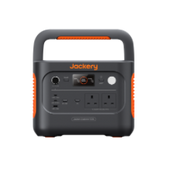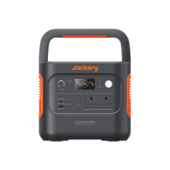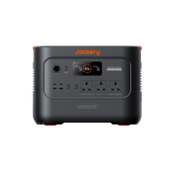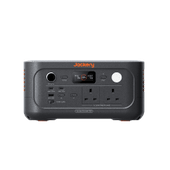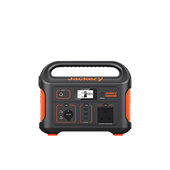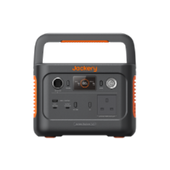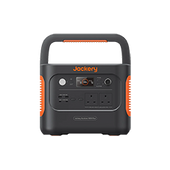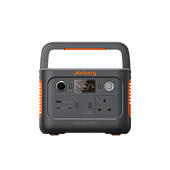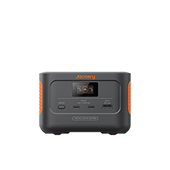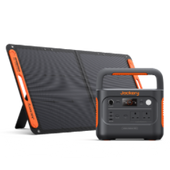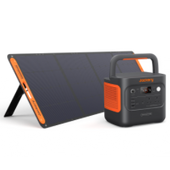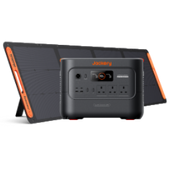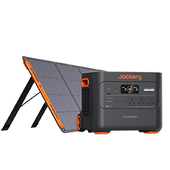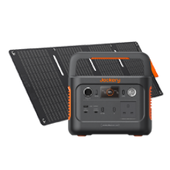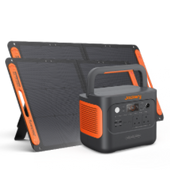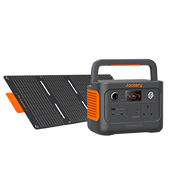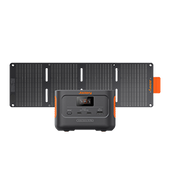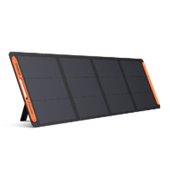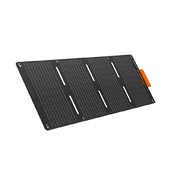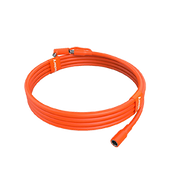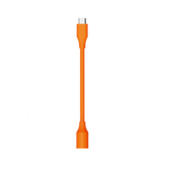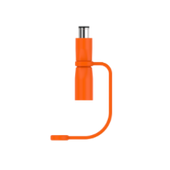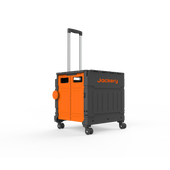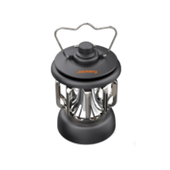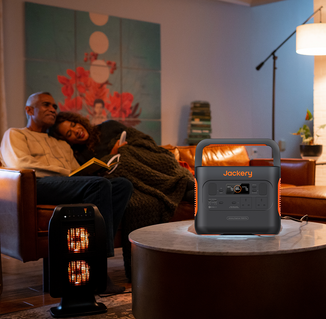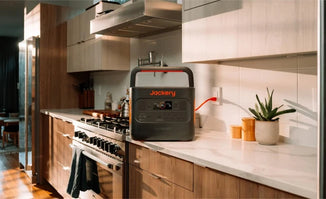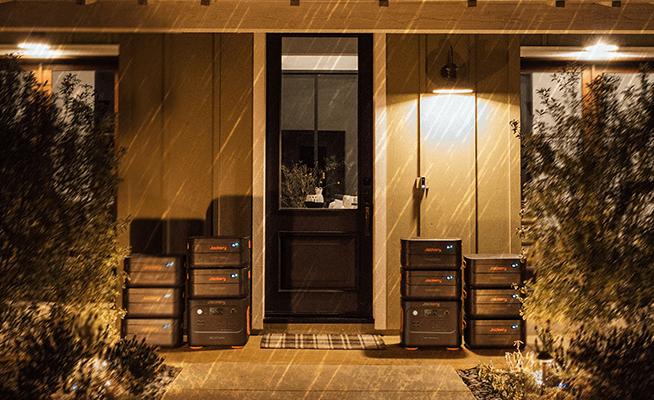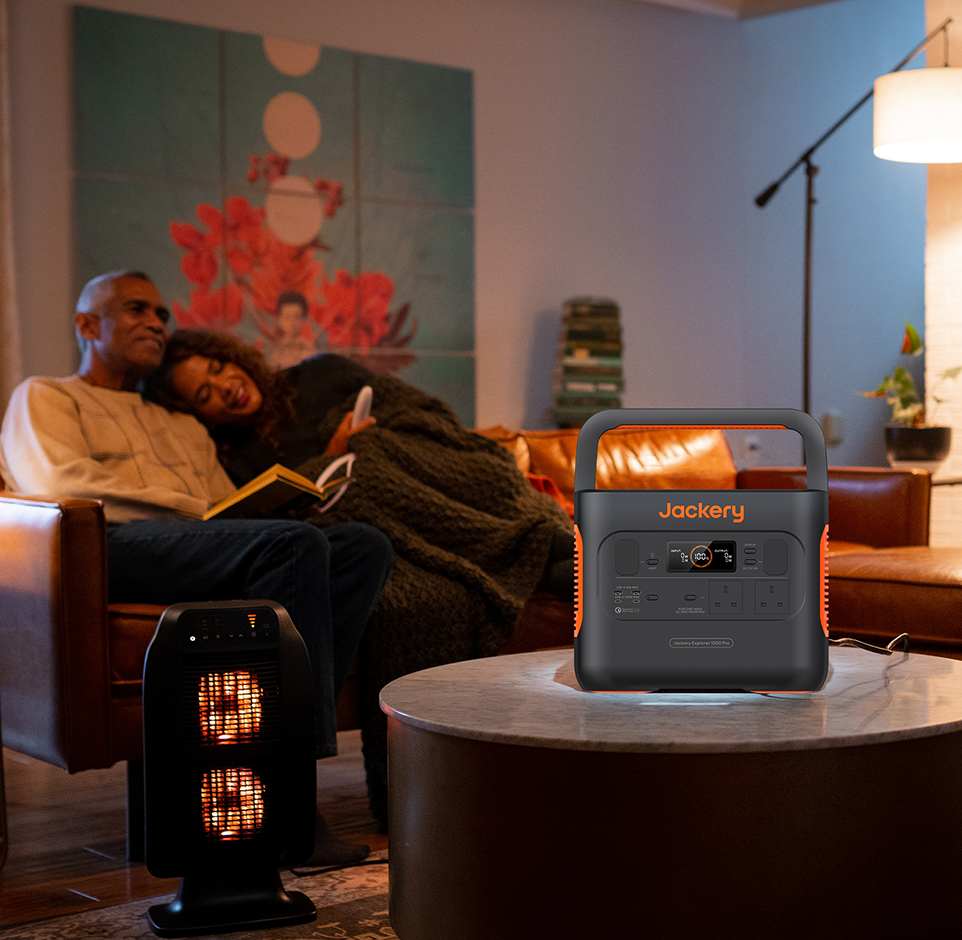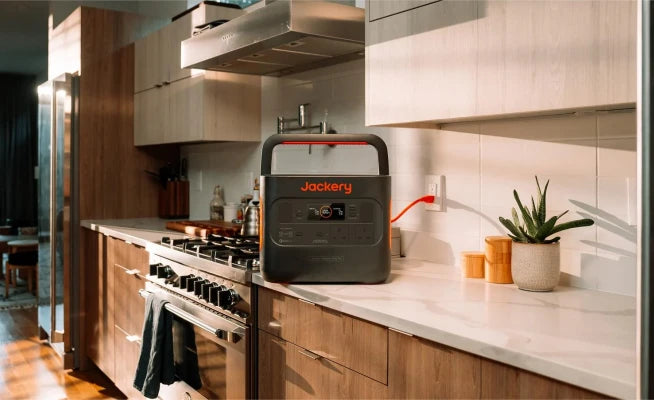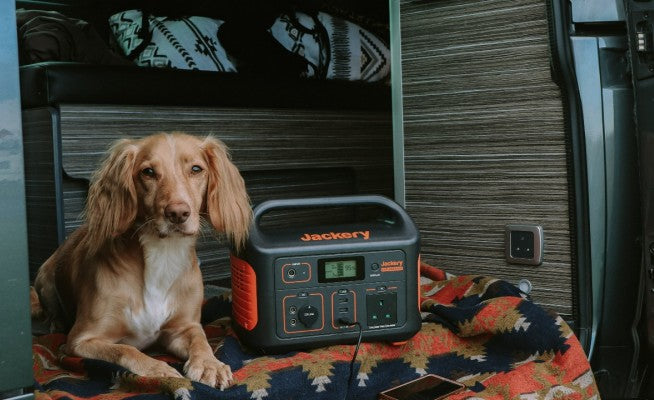Most homeowners prioritise staying warm during the cold winter months. These days, more and more people are choosing to use oil radiators rather than relying on central heating systems. As a result, the running costs of oil radiators are a hot topic for many UK households as the weather turns colder.
Understanding the basics and running costs can help you choose and use an oil radiator better. Follow this article to learn more and decide if an oil radiator is right for your home heating needs. Moreover, we highly recommend Jackery Portable Power Station to power oil radiators and other heating appliances in winter to save electric bills.
|
Key Takeaways: |
|
- The power of domestic oil radiators ranges from 500 watts to 3000 watts. The higher the power, the more energy the oil radiator consumes. In addition, the longer the running time, the more energy the oil radiator consumes. - The cost of a 1500W (1.5kW) oil radiator running for 6 hours a day is about 223.74p (£2.24). - Efficiency, room size, outdoor temperature, house insulation, and usage habits can influence the running costs of oil radiators. - Avoid setting the oil radiator's temperature too high, as every 1°C increase may increase energy consumption by 10%. - We highly recommend Jackery Explorer 2000 v2 and 1000 v2 for powering home radiators and heating appliances. These devices use solar energy to save money on your electric bill. |
The Basics of Oil Radiators
Home heating becomes an essential need for every family during the cold season. Oil radiators have become an increasingly affordable option for staying warm during the cold months. The following will introduce you to the basics of oil radiators to help you better understand and use this device.
What Is an Oil Radiator?
An oil radiator is a convection heater that people often use in their homes, patios, and garages. The inside of an oil radiator is a heat conductor composed of a combination of metal fins or tubes filled with a unique thermal fluid or oil. Once the power is turned on, the electricity heats the oil (heat reservoir) in the oil radiator, which heats the surrounding air. In short, an oil radiator is a heater that uses thermal oil to provide stable and efficient heat.
How Does an Oil Radiator Work?
The working principle of an oil radiator is relatively simple. After the electric heating element in the oil radiator heats the thermal oil, it is circulated in a closed system through a circulating pump. As the thermal oil flows through the oil radiator, the heat is transferred to the heat sink, raising the indoor temperature.
The cooled thermal oil is then heated in the oil radiator, and the cycle repeats to achieve a continuous heating effect. In simple terms, the working principle of an oil radiator is to heat the thermal oil inside the device and then provide a steady flow of heat through the oil circulation.
Why Do People Choose Oil Radiators?
Why should you consider using an oil radiator instead of other heaters? Let's explore its advantages together:
High Efficiency and Energy-Saving: Oil radiators have a high thermal efficiency (up to 99%) because they have almost no losses and directly convert all electrical energy into heat energy.
Good Heat Retention: One of the most significant advantages of oil radiators is that they retain heat even after power is cut off. Therefore, they provide long-term warmth and keep your space comfortable without consuming much energy.
Quiet Operation: Unlike fan-based heaters, oil radiators produce almost no noise except for the faint gurgling sound of the oil flowing inside. Therefore, they are perfect for bedrooms, offices, or any space you want to be warm and comfortable without noise.
Safe and Reliable: Because thermal oil is used as the heat carrier, the oil radiator operates under normal pressure, which is safer than the high-pressure heating system.
How Much Does an Oil Radiator Cost to Run?
Oil radiators are a standard home heating solution in the UK, and their running costs depend mainly on electricity consumption and prices. Here is a detailed analysis of the running costs of oil radiators:

Electricity Consumption of Oil Radiators
Your energy supplier will charge you for each unit of electricity you use. In other words, you are charged for each kilowatt-hour (kWh) consumed. Generally, the power consumption of an oil radiator depends mainly on its power and the time it is used.
The power of domestic oil radiators ranges from 500 watts to 3000 watts. The higher the power, the more energy the oil radiator consumes. In addition, the longer the running time, the more energy the oil radiator consumes.
You can estimate the running cost of an oil radiator with the help of the following simple formula:
Power of Oil Radiator*Oil Radiator Running Time=Oil Radiator Power Consumption
Example: Assuming a 1500W (1.5kW) oil radiator runs for 6 hours a day, how much electricity will it consume?
1.5kW*6hours=9kWh
Therefore, a 1500W (1.5kW) oil radiator running for 6 hours a day will consume 9kWh of electricity.
The following are some estimates of the electricity consumed by oil radiators of different powers at different running times:
|
Wattage of Oil Radiator |
Power Consumption (Running for 1 Hour) |
Power Consumption (Running for 2 Hours) |
Power Consumption (Running for 5 Hours) |
Power Consumption (Running for 10 Hours) |
|
500W |
0.5kWh |
1kWh |
2.5kWh |
5kWh |
|
1000W |
1kWh |
2kWh |
5kWh |
10kWh |
|
1500W |
1.5kWh |
3kWh |
7.5kWh |
15kWh |
|
2000W |
2kWh |
4kWh |
10kWh |
20kWh |
|
3000W |
3kWh |
6kWh |
15kWh |
30kWh |
The data in this table are all estimates and are for reference only.
Electricity Prices in the UK
Electricity prices in the UK vary depending on the region, supplier and time of use. According to the latest data (energy price cap), the average electricity price in the UK is about 24.86 pence per kilowatt-hour (January-March 2025). However, the electricity price depends on the user's contract and region. In addition, in the UK, government agencies adjust the energy price cap every three months so that electricity prices will change constantly.
How to Calculate the Running Cost of an Oil Radiator?
In general, the running cost of an oil radiator needs to be considered, including its power, usage time, and local electricity prices. You can estimate the running cost of an oil radiator with the help of this simple formula:
Electricity consumption of oil radiator*Price of electricity (24.86p/kWh) = Running cost of oil radiator
For example, if a 1500W (1.5kW) oil radiator runs for 6 hours daily, how much does it cost to run it daily?
9kWh*24.86p/kWh=223.74p
Therefore, the running cost of a 1500W (1.5kW) oil radiator running for 6 hours a day is about 223.74p (£2.24).
The following are the running costs of oil radiators based on different electricity consumptions (24.86p per kWh) based on the average electricity price (24.86p per kWh):
|
The wattage of an oil radiator |
Hourly running cost |
Daily running cost (8 hours) |
Monthly running cost (30 days) |
|
500W |
£0.12 |
£0.99 |
£29.83 |
|
1000W |
£0.25 |
£1.99 |
£59.66 |
|
1500W |
£0.37 |
£2.98 |
£89.50 |
|
2000W |
£0.50 |
£3.98 |
£119.33 |
|
3000W |
£0.75 |
£5.97 |
£178.99 |
The data in this table are all estimates and are for reference only.
What Factors Affect the Running Cost of Oil Radiators?
Here are a few of the main factors that affect the cost of running an oil radiator:

Efficiency of the Oil Radiator
High-efficiency oil radiators can heat a room to the desired temperature in a shorter time and with less heat loss, which reduces energy consumption and running costs. Inefficient oil radiators, on the other hand, require longer time and more energy to achieve the same heating effect, resulting in increased expenses.
Size of the Room
Generally, the larger the room, the more heat is needed. More heat means a more robust oil radiator is required or runs longer. Therefore, the larger the room, the more electricity the oil radiator consumes and the higher its running costs.
Outdoor Temperature
During the cold winter months, when the outdoor temperature is lower, families need higher indoor temperatures to stay comfortable, increasing the running time and energy consumption of the oil radiator, thereby increasing running costs. In relatively warmer seasons, the frequency of use and energy consumption of oil radiators will be reduced, and the running costs will also be reduced accordingly.
House Insulation Performance
The house's insulation performance significantly impacts the oil radiator's running cost. If the home has poor insulation performance and heat loss is fast, the oil radiator will need to run longer and at a higher power, increasing costs.
Usage Habits
The household's usage habits will also affect the running cost of the oil radiator. For example, leaving the oil radiator on for a long time, setting the indoor temperature too high, and not paying attention to turning off the oil radiator in unused rooms will increase energy consumption and running costs.
How to Use Oil Radiators More Energy-Efficiently?
Here are some practical ways to help you use oil radiators more energy-efficiently:

Tip 1: Set the Right Temperature
Avoid setting the oil radiator's temperature too high, as every 1°C increase may increase energy consumption by 10%. When you rest at night, you can lower the oil radiator's temperature to 16°C-18°C to reduce energy consumption.
Tip 2: Use a Timer
Please use the oil radiator's timer function to automatically turn it on and off during the period you need. For example, please turn it off when you are out and turn it on half an hour before returning home, which can ensure warmth when you return home and avoid unnecessary energy waste.
Tip 3: Choose Energy-Efficient Models
Energy-efficient oil radiators usually use more advanced temperature control systems and heating elements than traditional ones. These systems can accurately adjust the temperature and avoid overheating.
Tip 4: Enhance Indoor Insulation
Ensure your house has good insulation performance, especially when installing insulation materials in key areas such as walls, roofs, and floors. In addition, using double-glazed windows and heavy curtains can also effectively reduce heat loss. For example, installing sealing strips on doors and windows can reduce heat loss by 40%.
Tip 5: Regular Maintenance and Inspection
Regular cleaning (to improve heating efficiency), inspection (to prevent heat loss through gaps), and repairs can ensure the regular operation of oil radiators, improve efficiency, and reduce long-term running costs. In addition, please replace ageing or inefficient oil radiators on time.
Tip 6: Use a Generator or Power Station to Run
Investing in a generator to run appliances could be a wise choice, especially the solar generator, which turns sunlight into electricity. The portable power station can store the excess power for later use. Once the solar generator is fully recharged, you can run the radiator and other appliances for several hours to a few days.
If you worry about the bad weather conditions in the UK, you can also recharge the power station at home with wall sockets, especially in off-peak times, which can save electric bills to some degree.
Taking Jackery Portable Power Station and Jackery Solar Generator as an example, if you choose to use the solar generator to power your home appliances, you can save about 50.76 pence per day. If you use it for 10 days, you can save 5 pounds.

Jackery Portable Power Stations Explained
The higher the capacity of an oil radiator, the more expensive it will be to run, especially on cold days. However, radiator running costs could account for a big part of your electric bill, so we suggest choosing an alternative way to power appliances in peak times, such as a portable generator.
We recommend Jackery Portable Power Stations to charge your heating appliances and save on your electric bills. Jackery offers portable power solutions ranging from 99W to 12 kWh, capable of powering up to 99% of appliances, including radiators, space heaters, electric blankets, etc.
Also, the Jackery Portable Power Stations are compact and easy to carry so that you can put them everywhere in your home. Compared to gas or other traditional generators, they are safer to use, and you can even use them while sleeping.
|
Radiators |
Working Hours |
|
|
Jackery Explorer 2000 v2 |
Jackery Explorer 1000 v2 |
|
|
Small Radiator (600W) |
2.7H |
1.4H |
|
Medium Radiator (600-1500W) |
1.1-2.7200H |
0.6-1.4H |
|
Large Radiator (1500-2000W) |
0.8-1.1H |
0.6H |
|
Extra Large Radiator (2000W+) |
0.8H |
/ |
(*The working hours are only for reference; the actual working hours depend on your usage.)
Jackery Explorer 2000 v2
The Jackery Explorer Portable Power Station 2000 v2 has an astounding 2042Wh capacity and 2200W output, enough to power most household equipment. It also has two AC outlets, one USB-A 18W port, and two USB-C ports (100W + 30W), so you can charge several devices simultaneously, such as the radiator and electric blanket.
The world's first 2kWh LiFePO4 power station, which features advanced EV-grade CTB (Cell to Body) Structure technology⁵, is engineered to be more compact and lightweight. It weighs in at a mere 38.6 lbs—approximately the same as a suitcase. It is the ideal power solution for off-grid living, camping, and road trips and features a foldable handle for effortless transport.
With Emergency Super Charge Mode, which can be activated through the Smart App, the power station can be charged from 0% to 80% in just 52 minutes with Emergency Super Charge Mode, which can be simply activated through the Smart App. This feature is ideal for situations where power is required urgently. A complete charge requires only 103 minutes in regular AC charging mode.
There are also more ways to recharge it, including 2x SolarSaga 200W (5.5 hours), regular wall charging (1.7 hours), and car charging (24 hours).
- 2042Wh Capacity & 2200W Output: Powers Most of Devices, Lasts 10 Years (4000 Cycles)
- Lightest and Smallest 2kWh LiFePO4 Power Station: 41% Smaller and 35.6% Lighter than Industry Standard
- Multiple Charging Modes: AC/Solar/Car/AC+Solar/AC+Car; Full battery in just 1.33 hours with Emergency Super Charge
- ChargeShield 2.0 Protection Technology: 62 Layers of Comprehensive Protection with Safety Standards Certification

Jackery Explorer 1000 v2
We recommend Jackery Explorer 1000 v2 for powering electric radiators. From its capacity to its design, it is suitable as a portable power supply to provide enough electricity for small to medium household appliances.
The Explorer 1000 v2 Portable Power Station has an excellent 1500W output and 1070Wh capacity, 50% higher than the Explorer 1000. It can power high-demand items like portable space heaters, kettles, etc. Equipped with USB-A/C connections and dual PD charging up to 100W, it can simultaneously charge several devices (phone, laptop), rendering it the ideal companion for all your power requirements.
The app's Emergency Charge Mode allows the Explorer 1000 v2 Portable Power Station to be fully charged in less than an hour, offering vital power backup when the battery runs low. Moreover, charging from 0% to 100% within two hours via an AC wall outlet prolongs battery longevity.
Experience serenity with its nearly silent operation, maintaining noise levels below 22dB while energising your devices. This power station guarantees uninterrupted enjoyment during camping, work, or relaxation so you can power your electric cookers and other electronics without noise.
- 1070Wh Capacity & 1500W Output: Powerful power output for your ultimate outdoor freedom.
- Emergency Super Charging: Up to 7x Faster¹, full charge in as fast as 1 hour.
- Whisper-Quiet Operation under 22dB² for peace and serenity.
- Ultra-Durable & Reliable LiFePO4 Battery for 4000 cycles up to 10 years daily use.

Oil Radiators VS Electric Radiators
Oil radiators and electric radiators are two standard home heating devices. They each have advantages and disadvantages and are suitable for household needs and usage scenarios. The following detailed introduction can help consumers make wise decisions based on their needs.
Comparison of Working Principles
The oil radiator heats the internal thermal oil through electric heating wires. After the thermal oil is heated, it dissipates heat through the radiator's surface by radiation and convection. The surface temperature of an oil radiator is higher and can dissipate heat quickly, but it takes a certain amount of time to reach a stable heating state.
An electric radiator directly generates heat through resistance wires and mainly heats the indoor air by convection. Therefore, an electric radiator can quickly provide warm air, but the radiated heat is relatively low.
Comparison of Safety
Oil and electric radiators are relatively safe and will not produce open flames. The surface temperature of oil radiators is high, so you need to avoid contact to cause burns and avoid overheating due to tilting or blockage. Electric radiators must pay attention to the placement, avoid flammable items, and regularly clean and maintain the equipment.
Comparison of Comfort
Oil radiators can maintain warmth for a long time during the heating process, and the heat is evenly distributed, which is suitable for families who live for a long time. Nowadays, some oil radiators also have humidification functions, which can alleviate the problem of dry indoor air.
Although electric radiators heat up quickly, they have a short heat retention time. Long-term use may cause indoor air to dry, and the comfort level is relatively low. However, electric radiators with intelligent temperature control and adverse ion functions are more convenient and environmentally friendly.
|
|
Advantages |
Disadvantages |
|
Oil Radiator |
Long-lasting heating High safety No noise Various scenarios |
Long preheating time High power Occupied space |
|
Electric Radiator |
Fast heating speed Easy to control Small size Versatile |
High power consumption Not long-lasting heat preservation Safety issues |
In short, oil radiators are suitable for large spaces that must be kept warm for a long time, are energy-efficient, and provide high comfort. In contrast, electric radiators are ideal for quickly heating small spaces and are easy to move and use.
What to Consider When Choosing Oil Radiators?
In the cold winter, the choice of an oil radiator is directly related to the heating effect and use experience. However, when choosing the best oil radiator for your home, please consider the following key factors:
Wattage and Size
Generally, higher-powered oil radiators provide more heat and are suitable for larger spaces, while lower-powered oil radiators are suitable for smaller areas. For example, a 500W oil radiator is ideal for a small bedroom, while a 1500W oil radiator is more appropriate for a living room.
|
Radiator Size |
Wattage |
Room Size |
|
Small |
Up to 600W |
Ideal for small rooms and spaces |
|
Medium |
600-1500W |
Ideal for medium-sized rooms |
|
Large |
1500-2000W |
Ideal for larger living areas |
|
Extra Large |
2000W+ |
Ideal for open-plan spaces or large rooms |
(Data Source: vonhaus)
In addition, if you have high ceilings or a particularly drafty room, consider using a higher-powered oil radiator to offset the heat loss in these spaces.
Energy Efficiency
When purchasing an oil radiator, consider its energy efficiency label (a vital indicator) and compare the energy efficiency ratio of different brands and models. Oil radiators with high energy efficiency ratios have better heating effects, effectively reducing energy consumption and saving on home heating costs.
Safety Features
Oil radiators with safety features help prevent accidents and ensure safe operation. Therefore, please look for oil radiators with essential safety features, such as surface temperature control, overheat protection, and enclosed heating elements, especially if you have children or pets.
Warranty and Compliance
The longer the warranty period of an oil radiator, the higher the quality and reliability. A manufacturer with perfect after-sales service can ensure product quality and after-sales service reliability and reduce the risk during use. In addition, please make sure that the selected oil radiator meets the relevant safety standards.
In short, when choosing an oil radiator for home heating, you can only ensure that it can meet the family's heating needs and ensure its safe, economical, and efficient operation by comprehensively considering multiple factors such as size, energy efficiency ratio, safety, and after-sales service.
FAQs
The following are the frequently asked questions about the running costs of radiators in the UK:
1. Do oil radiators use a lot of electricity?
Compared to other heating devices, oil radiators are generally very energy-efficient. They provide long-lasting warmth even after they are switched off.
2. Are oil radiators expensive to run in the UK?
Oil radiators in the UK have medium running costs. They are a relatively economical way to heat most homes because they use energy efficiently and provide long-lasting warmth.
In general, oil radiators cost more to run than some more energy-efficient heating systems, such as heat pumps, but may be more cost-effective than electric heaters.
3. Is an oil radiator better for you, an oil radiator or central heating?
If you only want to heat a small space (such as one room), such as a home office, using an oil heater is usually more cost-effective than turning on central heating. However, if you need to heat the whole house, it is better to use central heating.
4. Are oil radiators safe to use?
Generally, oil radiators use sealed electric heating elements and thermal oil to emit warmth by heating the thermal oil, which is safe and reliable under regular use. In addition, oil radiators have multiple safety protection functions, such as overheating protection and automatic power off when tipping over, effectively reducing the risk of fire.
Final Thoughts
Due to their heat-retaining properties, they are economical to operate compared to many other electric heating methods. Therefore, whether you want to heat a small room or an ample open space, oil radiators are an option you can consider.
The above content analyses the basics of oil radiators, running costs, and how to use them energy-efficiently. Finally, we also compare oil and electric radiators to help more consumers struggling between the two make the right choice.

